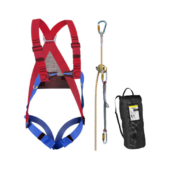Evaluation of vendor risk can save organisations thousands of dollars in mitigation expenses and numerous hours of research, as well as reputational harm and business continuity disruptions. Using the correct tools makes vendor risk assessment easy. We created a simple vendor risk management checklist to help firms improve third-party risk management and vendor lifecycle management.
Applying this vendor risk management checklist
Our vendor risk checklist helps procurement, finance, and executive teams assess new or existing vendors on the most important third-party risk categories, including:
- Compliance with regulations
- IT/security
- Financial
- Operational
- Reputational
- Strategic
Each area lists common risk factors and vulnerabilities to score on a 1–3 scale. The worksheet produces category averages and overall risk scores and levels.
What is vendor risk management?
Organisations are appropriately concerned about third-party risk from their contacts and data-sharing with outside parties. Business partners and vendors’ risks are identified, assessed, monitored, and mitigated by vendor risk management.
Companies learn how vendors operate, handle data, and safeguard systems to protect business and customer interests. Risk management and vendor due diligence are essential to ensuring an organization’s contracted vendors follow all laws and regulations.
Important components for managing third-party risk:
- Strategic vendor selection and investigation
- Standard contract phrasing and minimum risk
- Making policies to lessen risk to third parties
- Vendor compliance audits conducted currently
- putting internal information security procedures in place for vendors
- evaluating vendor performance in relation to contracts
What is Vendor lifecycle management?
Once a company hires a vendor, lifecycle management begins. Vendor lifecycle management (VLM) analyses vendor relationships for hazards.
From contract onboarding to renewal or termination, VLM continues. VLM helps companies track vendor operations and capabilities and detect concerns before they become issues. VLM clarifies expectations, reduces risk, and streamlines vendor management.
What are the benefits?
Risk impacts businesses in numerous ways. Contract and data security risks are common with third-party contractors.
Even without intrusions, inadequate third-party risk assessment makes running a business more expensive and time-consuming.
The following three benefits justify risk management improvements.
Lower expenses: A good vendor risk management programme cuts costs in various ways. It starts by limiting new and existing vendors to high-quality, responsive supply chain partners. This helps organisations negotiate better with fewer providers by building rapport.
Proper vendor risk management identifies concerns early, allowing firms to manage risk proactively. This protects the company from unforeseen costs. A vendor may have a history of missing contractual responsibilities. The company can implement contractual precautions or choose a different vendor before this happens.
Better operations: Effective risk management allows companies to keep a close watch on vendor relationships. It helps leaders quickly identify and address risks. Regular diligence reduces unexpected vendor issues, data breaches, last-minute changes, and rush orders. It also provides clear insights into the financial and operational aspects of partnerships. These benefits enhance productivity and predictability in procurement.
Better supplier relationships: Suppliers provide more strategic, cooperative, and competitive service with better vendor relationships. Strategic partnerships with long-term suppliers enable vendor performance monitoring. It also provides customisable contract terms, better net repayment terms, help during issues or disruptions, and more constant supply quality and availability.
Improve vendor risk management with 5 steps
Continuously vetting, onboarding, assessing, and refining supplier relationships improves vendor risk management.
Track performance and risk metrics for new and existing vendors with these four steps:
1. Record vendor risk management procedures.
Risk policy documentation is crucial to vendor risk management. A written policy defines vendor risk management principles, guidelines, and processes. It also evaluates supplier risk variables like financial soundness and vendor security standards.
The vendor lifecycle management programme should cover finding, renewing, and terminating vendors.
Sourcing: Knowing and documenting departmental table stakes helps vendor selection. Having a robust sourcing policy and parameters ensures stakeholders choose good providers before discussions.
Onboarding: Improving vendor onboarding lays the stage for a long-term partnership. Structure the onboarding process and list the vendor profile information and papers. Insurance binders, invoices, payment accounts, and signed contracts are included. If something goes wrong, centralising this data saves hours of searching.
Management: Monitor vendor contract performance and success indicators. Compliance metrics, delivery exceptions, price modifications, and other relationship indicators should be checked. Consider this data when renewing contracts or reviewing multi-year agreements annually.
Fulfilment: Evaluate delivery performance in relation to the conditions of the contract, paying particular attention to timeliness, quality, correctness, and management of exceptions. Fulfillment is the last yardstick for contract discussions and supplier relationships, and it is essential to assess vendor performance. It is essential to keep an eye on delivery quality, cost, and consistency as these factors may point to fraud.
Renewal/termination: How a corporation renews or offboards a supplier is as crucial as how it onboards them. Create a solid supplier renewal or termination process. Discuss performance measures, highlighting successes and areas for growth. Review performance before terminating a contract to ensure data preservation, deletion, and physical and virtual access rules are met.
2. Gather current vendor contract data.
Centralising vendor data simplifies performance measures and improvement identification.
Gather the following when onboarding a vendor:
- Contact info
- Rates, payments, and delivery
- Copy of latest contract Price and delivery performance metrics
- Risk data from prior assessments
Knowing who to contact in case of an issue helps your company prepare for unexpected circumstances. Centralised vendor data gives stakeholders the metrics to assess and update risk information.
3. Set vendor management performance metrics
An ongoing vendor management programme should include vendor risk management performance measures. Supplier onboarding and offboarding, performance evaluations, and customer satisfaction are important KPIs. These indicators ensure the risk management programme is effective and enables for speedy problem-solving. Use industry peer benchmarking data to ensure your programme follows best practices.
Choose performance measures that support your risk management program’s goals, such as:
- Multiple third-party vendor integrations
- Delivery exceptions
- Injury rates
- From last data breach date Average uptime percentage
- Time to find issues
- Issue resolution time
- Number of unblocked hazards
- Net promoter score
- Security questionnaire answer
- Documenting disaster recovery
- Past security ratings
4. Create vendor risk auditing methods
The vendor management audit should assess each vendor’s ability to protect sensitive data and assets, operational and IT security policies, and internal risk management. This involves examining policies and procedures and testing technical conformity with industry standards.
Risk management audits should review vendor personnel processes such background checks, security training, and incident response plans. Biannual evaluations might detect vendor environment or company changes that enhance risk.
Software and portal-based service providers should periodically check manufacturers’ networks for patches, vulnerability assessment protocols, and logging rules.
Audit reports or vendor report cards should include all evaluations. Companies can track changes and reference historical vendor data and trends.
5. Assess vendors.
A vendor risk assessment framework standardises supplier evaluation. It evaluates operational risk, financial performance, third-party interactions, and managerial oversight.
Consider automating operations with technology and analytics to improve assessment accuracy, timeliness, and exception management. Set criteria and evaluate compliance to determine supplier offboarding. By monitoring vendor risk periodically, you improve supplier relations and prevent fraud.
















